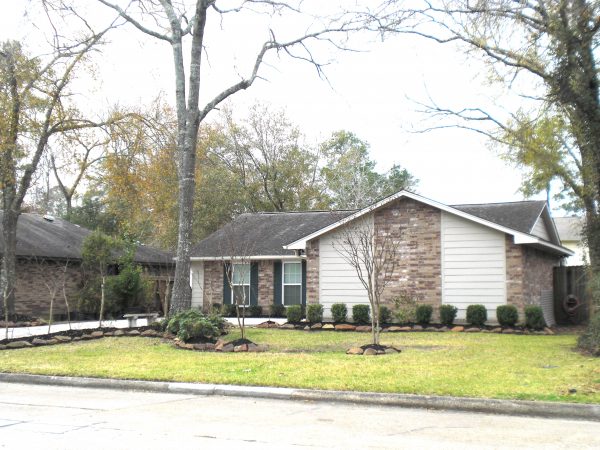
Before World War II, most homes were built one or two at a time, with each home being built to meet the unique needs of the family it was intended for. After the war, builders met the huge demand for housing by rolling out large subdivisions of standardized homes. The builders wanted to build rooms that met the ergonomic needs of the typical adult.
To do this, they needed data on things like how high sinks should be, how wide doors should be, and how high steps should be. With hundreds of such decisions to make, the builders were thrilled to discover that the Defense Department had all this data: The military had been gathering such data for years in order to design everything from tanks to battleships. The builders got the military data, and America got standardized housing. Soon the standards were set in stone as building codes were written to enforce the standards. There was only one problem with this whole evolution: the military’s data was all based on the physical needs and capacities of physically fit 18-year-old males!
So today we have a huge array of housing that is not well designed for large segments of the population. Seniors and children are the least well served by current housing. Today’s homes simply do not have the features and conveniences appropriate for safe enjoyment by a diverse population.
Your ability to function well in your home is one of the most important factors in determining how long you can maintain comfortable independence. Adapting your home to meet the needs of an aging population makes sense. Not only will it enhance market value, but a well-adapted home will make many day-to-day living tasks both easier and safer. Additionally, appropriate adaptations will often prevent the most common accidents that may ultimately rob you of your independence. If you don’t take responsibility for adapting your home, who will?
Start Early
Preparing your home for your senior years is a long-term project that should be started as early as possible — preferably well before middle age. Why so early? Over the years, you are constantly making repairs, renovations and improvements to your home. If each time you make a change you look at it as an opportunity to help ensure your independence later in life, you can make appropriate adaptations intelligently. Even if there’s a chance you’ll move, it makes sense to adapt the home as you go along. Seniors are a large and rapidly growing part of the population, and meeting their needs is an increasingly important factor in home sales.
In most cases, adaptations made in the natural course of maintaining and improving your home will require little (if any) extra cost. This is because most adaptations are simply a matter of appropriate design. For example, it costs no more to build a wide hallway than it does to build a narrow one, yet the wide one will make life much easier for anyone dealing with a wheel chair or walker. If you’re going to remodel anyway, just be smart about how you lay things out.
Another great advantage of making these changes as you go along is that you can design the solution right into the project. For example, if you get appropriate door handles now (levered types are best), you won’t need some add-on gizmo later to help you turn doorknobs. How many wheel chair ramps have you seen that stick out like sore thumbs? For many homes, better planning and design would make the ramp unnecessary.
Take Responsibility/Gain Control
By taking responsibility for making home adaptations over time, you keep control over the process. You make the decisions. All too often, when you procrastinate, nothing gets done until there is a crisis or immediate need. Then another family member, a discharge planner or a social worker is probably going to be making the decisions for you.
Ultimately, the price of putting off adaptations can be high. Leaving the home unchanged greatly increases the odds that you’ll experience a fall or accident at home. Besides the pain, stress, and costs of such a mishap, there’s the real possibility that you won’t be able to continue to live independently in your home. If you wait until some disability develops before making any changes, you may find that the same changes that would have cost very little if done with routine improvements will now cost a small fortune.
Typically, adaptations done at the last minute look like they are designed by a committee. In part that’s because in many cases last minute changes are designed by a committee! By the time all the arguing and compromising are done, your house may not reflect your tastes or priorities at all. So take control of your future and begin to make adaptations now.
What If You’re the Caregiver?
Independence. For seniors and just about everyone else, it is a central element of a fulfilling lifestyle. There is no greater symbol of independence than owning and living in one’s own home. More and more experts are discovering that extending the time that seniors can manage in their own homes is important in terms of both mental and physical health. From a societal stand point, institutions are a cumbersome and extremely expensive option. Helping people manage independently at home makes sense for everyone.
Because the arguments for sustained safe living at home are so compelling, caregivers can be very pushy about making changes. Concerned caregivers often get preoccupied with the risks associated with independent living. This preoccupation can put caregivers in the position of trying to impose a long list of home adaptations in a misguided effort to make the home accident proof. When imposing solutions, however, caregivers lose sight of the key element in the equation: independence.
Most people are such fierce protectors of their independence that they will reject out-of-hand a plan of action that usurps their independence – even if the plan of action has many merits. In other words, any approach that tramples someone’s sense of independence is doomed. Don’t fall into this trap.
Who’s In the Driver’s Seat?
Understanding the need for independence brings us to the most important element of adapting a home to better suit the needs and desires of seniors: the seniors whose “needs” are to be met must be in the driver’s seat. It is their home; it is their turf. Once this issue of whose home it is has been resolved, most people become pretty open to making changes. If the adaptations are being forced from the outside, most folks will resist heartily.
There is a flip side to the independence equation. Seniors who want to prevent meddling by concerned family, friends, and social workers should take the initiative in making needed changes. They’ll end up with a safer home, an easier daily routine, and a well-earned, renewed sense of independence.
Paying for Adaptations
Many folks argue that adaptations, while a good idea, aren’t affordable. The problem with this logic is that it ignores what it costs to live in a nice nursing or retirement facility. The amount you think you saved by avoiding needed improvements are likely to be dwarfed by the costs of moving into an institution. Making changes to your home can extend your independence by years. That’s years of independence and years of avoiding the costs of retirement housing. The numbers aren’t even close. Making the adaptations makes good financial sense.
So before you dismiss such changes as too expensive, have another look. Even if you don’t have the cash, there is a strong likelihood that the equity you hold in your home can help you pay for improvements. Talk to a lender and you may be surprised at how easy it is to finance the changes you need. Odds are that you’ll have to tap into that equity in a much bigger way if you have to move.
Home Adaptations to Focus on
There are four types of adaptations that you should focus on:
- Mobility into and through your home
- Handholds
- Hand-friendly handles and control knobs
- Other safety features
Mobility into and through your home. There is a very high chance that you, or someone you live with, will eventually use a wheelchair for periods of time. At the very least, as you get older you will have more difficulty getting around and steps will become a significant barrier. Even if you never need to use a wheelchair, you may wish to make better use of grocery bag carts, strollers, wheeled trash cans, wheeled luggage, and a variety of other conveniences. All these devices are stopped cold by steps and, like wheelchairs, are difficult to maneuver in tight spaces once inside the home. So there are two things to aim for: eliminating steps and creating maneuvering room.
One entrance to the main living level accessible without going up or down steps. This may mean rerouting or regrading the front walk and porch. If you do this rerouting or regrading when you are having the walk replaced anyway, there will be little (if any) additional cost. Inside the home, there usually aren’t many steps that can be easily eliminated. If you add an addition, just make sure you don’t make it necessary to use steps to get into it!
Prepare for single-level living. As you make changes over the years, seek to give yourself the option of living entirely on one level, even if only temporarily. Make sure you have a full bath, a kitchen, and a bedroom all on one level. If you have no bedroom on the kitchen level, consider installing pocket doors in your living room or dining room. Pocket doors are doors that hide away in the wall when not in use. When closed, they can convert a room into a private, temporary bedroom. Having laundry facilities on the same level is a big plus.
Maneuverability is most critical in the kitchen and the bathroom. Use floor surfaces that don’t become slippery when wet. Open up spaces and doorways. Whenever possible, design doorways that are 36 inches wide. Make sure the thresholds you do use have beveled (sloped) edges. (Thresholds are the wooden, metal, or stone bumps on the floor of outside doorways and bathroom doorways.) While you don’t give any thought to thresholds when you are fully mobile, they represent real obstacles to wheelchairs and other wheeled devices. These changes will not only make your home wheelchair friendly but will also give it a more open, spacious feel.
Handholds. The next issue to focus on is handholds. While it seems silly, keep in mind that many serious falls are caused by inadequate railings and grips. This is especially true in the bathroom. Ensure that you’ve got plenty of support around the toilet and the tub or shower. If you don’t want to install grab bars now, but are doing any sort of remodeling, ask your contractor to include “blocking” throughout the bathroom. Blocking is just wood added behind the drywall or tile that provides a solid material to which grab bars can later be fastened. Done along with remodeling, the costs are minimal, but if you have to add blocking later, it can be very expensive.
Check the stairs around your home. Does every step in the house have an adequate railing? Many original stair banisters are good for little more than show. An adult’s body weight can easily tear them from the wall. Many original railings don’t extend far enough at the top or bottom of the steps. Can someone get a good grip before committing to the first step? These banisters need to be checked and should be reinforced or extended if necessary.
Hand-friendly handles and control knobs. Getting around in your home doesn’t do you much good if you can’t open the doors or use the appliances! A room-by-room review of handles and knobs will yield a substantial list of inadequacies. We’ve already discussed using levered type doorknobs.
Bathroom faucets are another problem area. Most people find that a single lever that controls both hot and cold water is the easiest and safest to use. The kitchen may be the most critical of all for checking hand-friendly handles and controls. Can you reach the stove control knobs without risking a burn to your arm? Will they be easy to turn as your hands become less nimble? How about the sink faucet? What about all those cabinet and drawer handles?
Ready to start your senior friendly remodel?
Find ProsOther safety issues. Finally, there are some other issues to consider. The odds are that your neighborhood will become less safe over time. Have you taken adequate home security measures? Do you have bright, automatic, external lights? What about internal lighting? As you get older, it takes more light to see the same things. Reading lights need to be brighter. Well-lit stairs become ever more important. An intercom can provide added safety and a convenient way to communicate with others when it’s difficult to get around.
Burns are one of the most common injuries for older folks. We already talked about the stove controls. Often, you can eliminate the use of the stove for heating water, which is its most common use. There are hot water dispensers that are set up like another faucet at your sink and eliminate the risks associated with heavy pots, a hot stove, and slopped scalding water. Scalding water also causes many injuries in the bathroom. It is not at all unusual for someone to fall in the shower or tub, hitting the faucet on the way. If the water temperature is suddenly increased and you can’t get to the controls, even moderately hot water will cause burns if allowed to flow for several minutes. This is another hazard that can be eliminated.
A number of manufacturers make faucets that have a built-in scald-prevention mechanism which automatically cuts off water flow if the temperature exceeds a preset maximum. Such devices can also eliminate the scalding that can occur in the shower when someone else is flushing a toilet or otherwise lowering the cold water pressure. A simple, low cost way to reduce burns from hot water is to lower the temperature setting on your hot water heater. Many heaters are set at a scalding 140 degrees, when a much safer 120 degrees is adequate.
Maintaining independence takes more than words and will: it takes actions. This guide should help you get started in your quest to adapt your home to maximize the years you can operate independently in your own space.
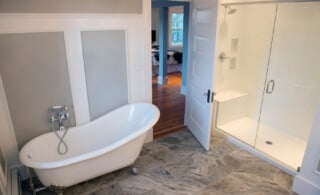 Home Adaptations for Your Needs
Home Adaptations for Your Needs  Modern Design Trends & Advice for Aging in Place
Modern Design Trends & Advice for Aging in Place 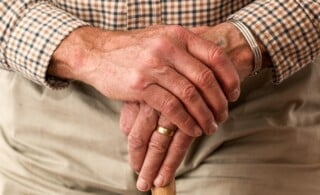 Preparing Your Business for the Aging-in-Place Boom
Preparing Your Business for the Aging-in-Place Boom 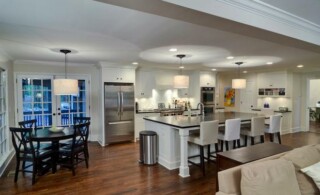 Empty-Nesters, Smart-Home Tech & Their Impact on Home Improvement Trends
Empty-Nesters, Smart-Home Tech & Their Impact on Home Improvement Trends 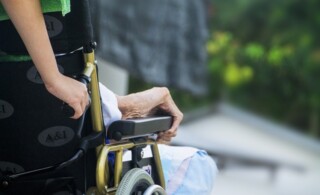 How to Coordinate Your Assisted Living Home Care
How to Coordinate Your Assisted Living Home Care 

Are there grants or tax credits for installing vinyl plank flooring and getting rid of uneven bumpy slate floors in my home. I catch my toes & trip on the slate. I am 65 and have been on disability since 2001. Getting rid of the uneven slate would making walking in my home much easier and softer if I fall.